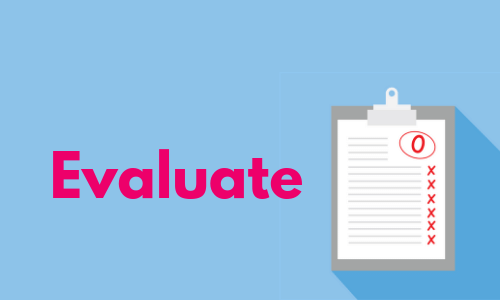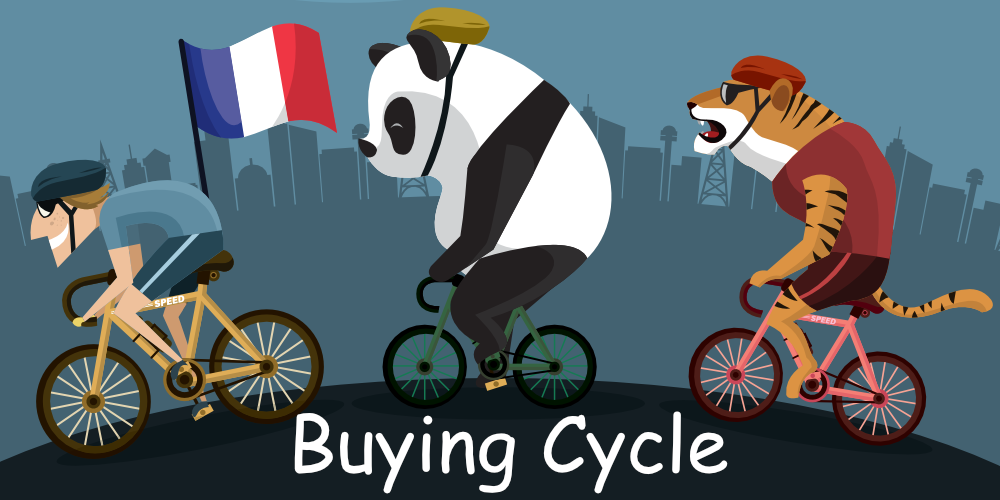Have you ever wondered about the buying cycle and what a customer goes through?
And have you ever realised that those phases are critical for your success?
The buying cycle is not so simple, however there is a returning pattern in how visitors become customers and we’ll break them down for you.
1. Recognise The Issue

The first phase starts with understanding or believing that there are people out there with a problem or issue.
The importance of this issue (and how fast it’s needed) will determine
When we say “need” we’re not just talking about the basic or physiological needs as described by Maslow, but we also refer to desires
When you understand the issue and how you can solve it, it becomes much easier for you to explain why you’re needed and therefore boost your sales overall. Even if this person is not aware it has a problem, by presenting it before him or her, you can
2. Research—Search For Information
Once the prospect understands the problem, he or she will go out there to search for the solution. Example: if someone
People can find this solution via “know sources” (e.g. a shopping street), ask friends or search online (e.g. googling it).
How do you leverage this phase? You establish yourself as a leader or authority in this space. If everyone understands you’re the expert for this issue, people will come to you naturally.
How to establish yourself:
- Have Google AdWords campaigns
- Facebook Ads, particularly brand awareness
- Search Engine Optimisation
- Content marketing
- Significant partnerships and sponsorships
- Excellent reviews
- Be present and share engaging content on social media
- Professional website
- Overall, good reputation (word-to-mouth)
3. Evaluation Of Alternatives

Even if you use the perfect logo, the right colours and convey the right message, it doesn’t mean you will
Now more than ever customers have accessibility to various tools to pick out the right product or the right price. Here starts the comparison.
This stage what you need to do is to provide as much relevant information and display your unique selling points. You can even include the comparison right on your website, so the customer doesn’t need to it him- or herself.
It’s not needed to keep a close watch on your competitors, but it’s good to know what is going on in the market. Use your Google Analytics to see where your visitors are coming from, which could provide a valuable nugget of wisdom.
4. Purchase Decision
You made it through the first couple of rounds. The customer will buy your product.
But…
Even if the customer
When you see that someone has added an item to the cart and leaves, it’s a good idea to send a followup to remind the item is still available. Maybe even throw a coupon at it, while you’re at it?
5. Purchase

The step to this 5th phase can be almost immediately after the purchase decision or it can take a while longer. It needs to be available and convenient.
But again, even then nothing is certain.
Simplify the actual process of buying easy and simple. Reduce as many steps as possible, improve your load speed and assure their transaction will be secure.
6. Post-Buying Behaviour
Hooray! We have sold something! We’re done now, right?
Wrong…
To prevent your customer from
If the customer recites the purchase process and doesn’t leave with a positive mindset, then it might return your product, inquire a refund or decides never to buy from you again.
What you can do:
- Send a “Thank You” email
Do keep a close watch on reviews- Provide serious customer support
- Make additional offers
- Send out a newsletter with interesting information
- Keep a social media presence
- Send out surveys to measure the satisfaction
- Create remarketing campaigns
- Send a gift

If you already sell something, identify all your phases and see where you can improve. If you can’t figure it out yourself or you want experts to help you,
Have a great day!
You might also like:
- 7 Things To Keep In Mind Creating Your Logo
- How To Bring
Customers Back Into Your Business - The Psychology of Colour in Marketing
- Promoting Yourself Online: 9 Ways To
Actually Deliver - How To Write Engaging Content For Your Website
